

With the new available housing supply critical in San Diego and across the country during the current housing crisis, affordable housing options for low-income people in need are more important than ever. Below are several examples of recent Brownfields projects that have been or are under development by affordable housing developers to benefit the critical needs of the developmentally disabled and seniors.
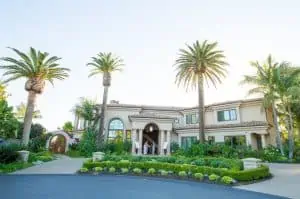

RD Brown Company and EAH Housing – Imperial Seniors – A former gasoline service station in the City of Imperial is being redeveloped into an assisted senior living facility. The project has gasoline impacted soil, groundwater, and currently has an open unauthorized release case overseen by the Regional Water Quality Control Board. The Water Board allows the proposed development to move forward while the case is still open, provided that a vapor barrier is installed beneath the proposed building and groundwater remediation and monitoring continue until gas/benzene levels in groundwater meet acceptable levels. Construction is on schedule to start in 2022.
Save the Date for Land Recycling!
Seize the opportunity to meet with colleagues working to reuse, rebuild, and revitalize communities through land recycling! This June, the Center for Creative Land Recycling (CCLR), U.S. EPA Region 9, and the CA Department of Toxic Substances Control’s (DTSC) Office of Brownfields will host the third California Land Recycling Conference (CALRC) in person in Carson, CA. The Conference offers an exciting space to learn, connect, and be inspired.
CALRC will focus on the most timely issues unique to California and resonate with the national big-picture, including affordable housing, vapor intrusion, funding, and equitable development. As evidenced by the Bipartisan Infrastructure Law (BIL), Build Back Better, and other federal and state revitalization priorities, we see historic investment in brownfields, climate, and economic revitalization. And California is leading the charge.
Come reuse, rebuild, and revitalize! Save the date for June 21-23, 2022, in Carson, CA!
Introduction
Contamination at thousands of shopping centers across California from previous business operations presents problems for property owners who wish to continue commercial use, redevelop, and maintain property value. Commercial property remediation targets returning these buildings and land to predevelopment conditions, presenting opportunities for reuse and redevelopment.
One property owner discovered that securing adequate funding and working closely with state and regional regulatory agencies leads to success despite changing regulations and oversimplifying regulatory health risk assessment methods. The Draft Cal-EPA Supplemental Vapor Intrusion Guidance (DSVIG) suggests changes to the methods in which vapor phase transport and potential health risks are modeled and calculated for occupants of buildings with known soil or groundwater contamination beneath them. These changes, the result of a multi-year working group collaboration, recommend an arguably more conservative calculation of indoor air quality. The changes rely on EPA work and guidance, with empirically derived attenuation factors (AFs), which will increase the number of sites requiring additional environmental assessment and mitigation to achieve health risk standards. Although the DSVIG is currently draft guidance, there is evidence that regional regulatory agencies have already adopted AFs in calculating indoor air quality.
Diamond Bar Commercial Center Assessment and Mitigation
Drucker Survivors Trust owns and operates a multi-tenant commercial building in Diamond Bar, California, including a dry cleaner at one time. The former cleaners caused an unauthorized release of dry cleaning solvent containing chlorinated volatile organic compounds to the subsurface during its operation.
Financing for this all too common situation requires environmental due diligence in the form of research commonly completed in a Phase I Environmental Site Assessment followed by an assessment to characterize potential liabilities associated with chlorinated solvent releases before lenders provide funding.
Regulatory oversight in California can either be voluntarily engaged or involuntarily if assessment activities on an adjacent or nearby property indicate the presence of chlorinated volatile organic compounds in the subsurface linked to dry cleaning operations in the vicinity.
The Drucker Survivors Trust sought approval from the applicable regulatory agency, Los Angeles Regional Water Quality Control Board (LARWQCB), to assess and mitigate the chlorinated solvent release to ensure the protection of human health and reduce environmental liabilities associated with the property.
Regulatory closure is the acceptance of assessment and remediation activities by the governing regulatory entity to bring the site into compliance. Compliance, in this case, required assessment and mitigation of beneficial use groundwater underlying the property impacted by the solvent release and completing soil vapor assessment and health risk screening calculations under current state and federal guidelines.
Guidance on vapor assessment and associated health risk screening methods have changed rapidly in California state environmental regulations. As environmental engineers and consultants, SCS professionals manage an extensive list of vapor assessment, health risk assessment, and vapor intrusion mitigation projects resolving these vapor–related issues.
To start this project, the SCS team prepared a successful grant application securing more than $650,000 in funding from the California State Water Resources Control Board’s Site Cleanup Subaccount Program (SB 445, established in 2014). This state-provided grant money enables the assessment and mitigation necessary to close with the LARWQCB.
Subsurface assessment activities defined the extent and scale of chlorinated solvent impacts to soil vapor, soil, and groundwater, enabling the design of a remediation program. To reduce the groundwater contamination to cleanup levels set by the LARWQCB, SCS Engineers designed and implemented an injection program to deliver engineered chemicals directly to the groundwater plume. The injected chemicals destroy the chlorinated solvents via in situ chemical reduction and stimulation of biological degradation.
While challenging drilling conditions precluded previous consultants from attempting groundwater remediation, SCS industry experts safely achieved up to a 99 percent concentration reduction within the groundwater plume. SCS designed a soil vapor assessment that relied more on site-specific data collection and less on conservative default assumptions while conforming to the most current regulatory guidance targeted at minimal impact on the building tenants.
SCS managed all aspects of the project, including grant requirements and communication between the client, regional and state water board staff, city staff, and subcontractors. Obtaining and managing entrance under state waste discharge requirements is necessary, and SCS completed all necessary permitting and reporting requirements to facilitate the groundwater mitigation activities. Careful planning and experience with similar projects minimized impacts on tenants and kept the project on a strict timeline with no missed regulatory deadlines. SCS continues working with the LARWQCB to conclude the client’s final closure requirements and is in the process of applying for an additional $900,000 in SCAP funding to implement the final stages of the project targeted at obtaining final regulatory closure.
Changes Coming to Regulatory Guidance
Recent changes to regulatory guidance in California are arguably making obtaining closure on sites with vapor intrusion health risk concerns more difficult to achieve. The Draft Cal-EPA Supplemental Vapor Intrusion Guidance (DSVIG) suggests changes to the methods in which vapor phase transport and potential health risks are modeled and calculated for occupants of buildings with known soil or groundwater contamination beneath them. These changes, which result from a multi-year working group collaboration, recommend a more extensive and site-specific data collection effort. They include indoor air quality calculation methods relying on EPA work and guidance and empirically derived attenuation factors (AFs) which some would argue lead to overestimating potential health risks.
The consequences of the DSVIG are potentially significant if adopted as is and appear likely to result in more sites being “screened in” with vapor intrusion issues and more sites requiring mitigation. The impact, resultant costs, and possibly detrimental secondary effects such as decreases in affordable housing production, particularly in urban infill areas. And while none would argue with appropriate protection of health risk, the question is whether the studies and empirical data used to support the DSVIG represents the best available science and is truly representative and predictive of risk.
The DSVIG adopts an attenuation rate of 0.03 for the flux of both soil and sub-slab vapor to indoor air based on a previous 2012 EPA Study comprised of empirical data collected from buildings arguably not representative of modern construction in California.
The development of a reliable screening level attenuation factor for California based on high-quality, recent, California-specific data:
1) Will be protective of human health, as no toxicological imperative or basis supports a call for accelerated or immediate action (as evidenced by the fact that the DSVIG workgroup commenced its work in 2014 and issued the review draft in 2020).
2) Will ensure California’s environmental policy satisfies the gold standard for data quality and insightful analysis in which the state once took pride.
3) Will not unnecessarily decimate the California housing development market. The empirically derived screening level AF in the DSVIG is overly conservative based on the available data. More accurate empirical data and measurement methods for site-specific measurement are available.
With respect, oversimplifying the VI health risk assessment methods has constrained the environmental community’s ability to apply science-based health risk screenings, often resulting in costs associated with additional environmental assessment and mitigation. An additional revision to the DSVIG to utilize a screening level AF more reflective of the current California data and building specifications could save state resources, increase infill development by reducing urban sprawl, promote housing development, all while protecting human health.
About the Author: Keith Etchells is a professional geologist and hydrogeologist with over two decades of experience assisting clients in managing environmental risks associated with ownership, transfer, or operation of commercial, industrial, and waste disposal properties. His particular technical expertise involves aspects of groundwater science and engineering relevant to contaminated sites and landfills, including supervision and conduct of subsurface data acquisition, remedial design and implementation, conceptual site model development, aquifer testing, extraction well design, groundwater quality evaluation and treatment, vapor intrusion health risk assessment and mitigation, predictive modeling, and contaminated soil and groundwater remediation design.
He is responsible for designing analytical, geotechnical, and hydrogeological data collection programs to complete subsurface assessment and remediation. He has prepared subsurface assessment documents, property mitigation plans, vapor intrusion risk assessment documents, soil management plans, aquifer characterization documents, conceptual site models, and groundwater remedial design and implementation documents.
As large tracts of geographically desirable vacant land become scarcer, residential and commercial property developers are increasingly turning to old landfills or former dumps. However, such redevelopment is complex and rife with uncertainties. When compared to greenfield development, the land acquisition costs are lower. Still, any savings are typically offset by greater environmental and infrastructure costs associated with the foundation, landfill gas management, stormwater management, groundwater impacts, meeting closure requirements, and multiple regulatory agency coordination. Therefore, it is important to maximize the developable area while providing engineering solutions to make the project economically feasible. In this blog, we identify some options to reuse challenging sites and lessons learned to contribute to successful redevelopment projects.
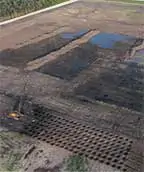
Deep Dynamic Compaction
Old landfills or dumps present some unique soil stability challenges. Deep dynamic compaction (DDC) is a ground stabilization technique that has gained popularity in recent years to improve subsurface soil conditions. DDC involves dropping 6 to 30-ton weights from a height between 30 and 75 feet to achieve the desired soil compaction. DDC can effectively apply to a range of subsurface materials, including former C&D debris or municipal solid waste dumps.
DDC provides a stable foundation for future development, minimizes differential settlement while leaving the landfill waste in place, and eliminates the costs associated with removing, transporting, and disposing of buried waste, costing millions of dollars. For simplicity’s sake, let’s consider a 1-acre old landfill or a dumpsite with an average of 15 feet of waste. If excavating the waste and replacing it with clean fill, the disposal fee costs for the excavated waste alone could exceed $400,000. Alternatively, DDC costs range from $1.50 to $2.00 per square foot or $65,000 to $87,120 per acre, excluding mobilization, which costs around $30,000.
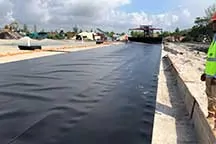
Gas Mitigation Systems
Constructing buildings on top of dynamically compacted areas generally requires a combustible gas barrier layer below the building foundation to manage subsurface combustible gases (typically methane). The barrier is required because the waste remains in place. In its simplified form, gas mitigation systems include:
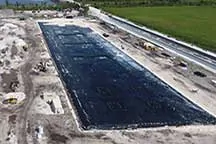
These gas mitigation systems can be either a passive or an active system with a blower. The cost of such systems varies depending on the size of the building, location, and type of liner system used. Typical capital costs for passive systems are in the range of $7 to $9 per square foot for the spray-applied liner and $3 to $4 per square foot for the HDPE liner. For an active system using blowers, add $3 to $4 per square foot. The designer configures a system from these options to address the client’s risk preference and considering future tenant preferences.
Using innovative approaches, impaired lands are increasingly attractive to developers. Beyond the cost-saving benefits to developers realized through DDC and an appropriate gas mitigation system, such projects also create local jobs, increase the tax base, and protect public health and the environment.
About the Authors:

At SCS, we’re proud that our services, vision, and corporate citizenship support community revitalization through brownfield redevelopment and land reuse.
The U.S. Environmental Protection Agency in 2017 estimated that roughly 40 percent of all Americans, including a quarter of all children, live within 3 miles of a brownfield site that has received EPA funding. This is a conservative estimate, as only 5.5% of brownfields nationwide have benefited from EPA resources. But these striking numbers clarify the degree to which remediating and repurposing contaminated and underutilized properties has transformative potential to protect our residents’ health and safety.
SCS firmly believes that all blighted, abandoned, and underutilized properties have a future as community assets. We support this vision through the services we provide as well as through our corporate citizenship. The partnership of SCS technology and environmental know-how with CCLR is powerful. There is no shortage of possibilities for brownfields now; ski resorts, parks, mixed-use properties, solar farms, really almost any infrastructure is possible.
SCS is proud to support the Center for Creative Land Recycling (CCLR, or “See Clear”), the leading national nonprofit dedicated to transforming communities through land recycling. Over the past two decades, CCLR has convened, navigated, and influenced the redevelopment industry. Their programs educate the public and community stakeholders to clean up and repurpose underutilized and environmentally impacted properties in a sustainable, equitable and responsible manner.
CCLR and SCS share the belief that with the right training, incentives, and conditions — chiefly, an active corporate partner/investor, community support, and municipal leadership — the redevelopment of brownfields changes communities for the better. CCLR has produced two videos, “About CCLR” and “What is Land Recycling?,” which provide important perspectives about CCLR’s mission and accomplishments.
Dan Johnson, Jim Ritchie, and Amy Dzialowski are among the SCS staff who have worked with CCLR. They have spoken on panels at CCLR’s California Land Recycling Conference, participated in vapor intrusion study groups, teamed with CCLR on providing technical support to West Sacramento and other municipalities, and serve on the planning committee for the Brownfields 2021 Conference together.
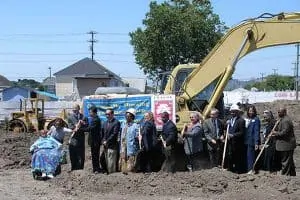
For more information about CCLR, brownfields, and property remediation, contact , or Jean Hamerman, Acting Executive Director of CCLR.